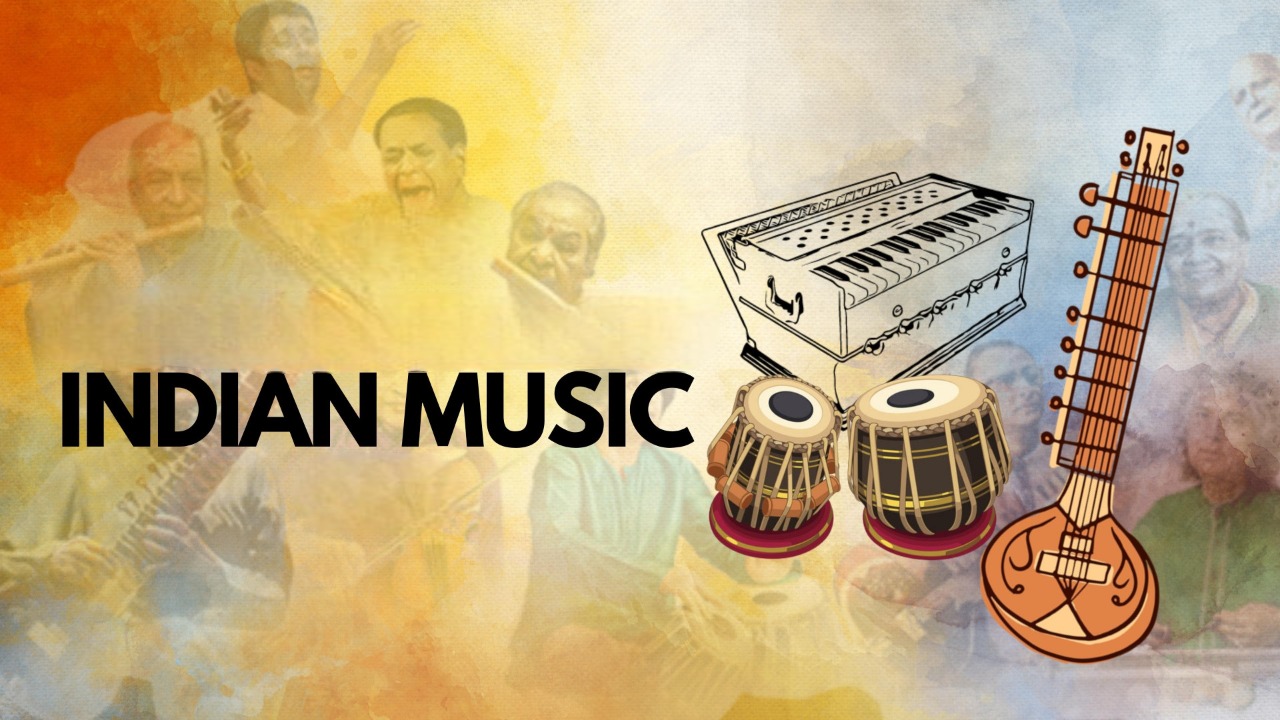The tradition involving vocal employs strong usage in Indian Music. These songs mostly obey the ancient forms. Vocal music plays a predominant role in the Natya Shastra.
Indian Music
Contemporary music forms is derived from well defined structures. These components in turn obey a primary theme, a secondary theme and form a framework of improvised music. Few genres, are old and few new. Dhrupad and dhamar are the ancient two genres that are still practised; they go back to the Mughal era. Equally old, different in style, is the tarana. This is based upon meaningless syllables. More modern are the highly improvised khayal, dadra and thumri. Another classical style which has almost disappeared is the tappa of Punjab.
Many classical songs are devotional in nature. The most notable forms are the bhajan, dhun and kirtan of the Hindus, the qawali of the Muslims and shabad of the Sikhs. Music comprises of various popular genres. One among them is ghazal which is popular for its rich poetic content. Besides, song is termed as geet in hindi. The most popular are the film songs.
Few genres are oriented specially towards musical education. The preferable example is lakshan geet, where the lyrics of the song describe the rag. Another genre is the swaramalika, which uses the sargam of the piece instead of the scipt.

Indian Music Types
Rich tradition of folk music vary from place to place.
Folk, Classical and Popular Music
The musical variety in India ranges from simple melodies to the highly refined music played. It resembles the heterogeneous population in terms of language, religion and social status. In the villages, music is an essential element in many rituals. The music is played using different instruments of different sizes and different rythms. These groups play at weddings, funerals and other religious processions. The folk performers travel in groups along the villages but rarely in cities.
Many of the rural regions enjoy professional music. Many religious mendicants, travel around the countryside playing devotional songs. There are also acrobats, snake charmers, and storytellers who perform along the rural regions, offering entertainment to the people in the villages. Music is part of their acts and all these tales, are taken from the stories of Mahabharata and Ramayana.
Classical Music
In metros, variant forms of music prevails. Of them, popular is the classical music of north India and of south India. Both rythms are supported by an elaborate theory.
Classical music is composed of two main constituents, the raga and tala. The raga is derived from a Sanskrit word “to colour”. The tala describes the time measure in terms of time units and differentiate according to the tempo.
Non-Classical Music
Only few classes of people enjoy classical music. Since 1930, a new variety of music related to cinema got world-wide popularity. Most of the Indian cinemas include six songs of different genres. Cinema music drives its inspiration from a number of sources. Influence of Western music is seen in the performances by large orchestras.
Apart from classical and theatre music there are also forms of urban and rural music. Street bands, street plays, storytellers and magicians make performance during every possibility. Music performances are given on stages which include both film songs and devotional songs. During ancient era, courtesans in the Raj Darbar used to sing and perform in traditional fashion. In this modern era, shows of Western chamber and occasional concerts are held in metro cities, particularly.



